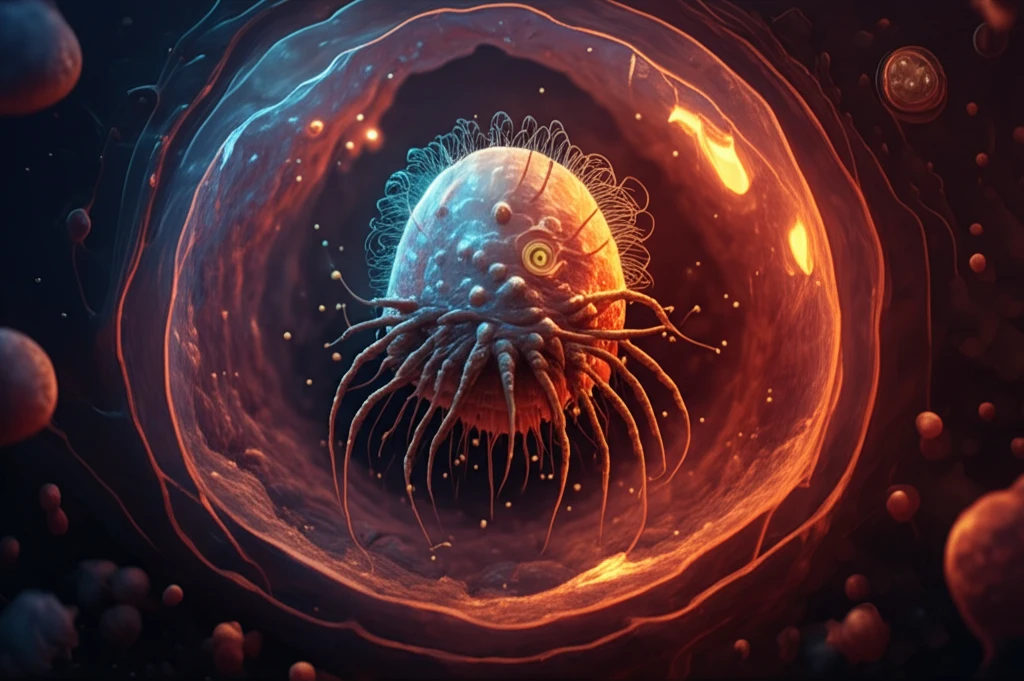
Amazon River Mystery: A New Fish Parasite Species Discovered
"Scientists Identify Calyptospora paranaidji, a Unique Apicomplexan Parasite Affecting Peacock Bass in the Tocantins River"
The Amazon rainforest, a realm of unparalleled biodiversity, continuously unveils nature's hidden secrets. Among these recent discoveries is a new species of parasite, adding another layer of complexity to the intricate web of life in this tropical ecosystem. This newly identified parasite belongs to the genus Calyptospora, a group known for infecting aquatic organisms. This particular species was found within the hepatic tissue of the peacock bass (Cichla piquiti) in the Tocantins River, a major Amazon tributary.
The discovery, led by Dr. Edilson Matos and colleagues, not only expands our understanding of parasitic biodiversity but also highlights the importance of ongoing research in under-explored regions. Apicomplexan parasites, like Calyptospora, are significant due to their complex life cycles and potential impact on host populations. Understanding their diversity and distribution is crucial for maintaining the health and balance of aquatic ecosystems.
This article will explore the characteristics of Calyptospora paranaidji, its evolutionary relationships, and the broader implications of its existence within the Amazonian ecosystem. By examining the research methods and findings, we can gain a greater appreciation for the hidden world of parasites and their role in shaping the environment.
Unveiling Calyptospora paranaidji: Morphology and Phylogeny

The research team meticulously analyzed specimens of Cichla piquiti, a commercially valuable fish native to the Tocantins-Araguaia basin. Over a period of two years (2016-2017), they collected and examined 32 specimens, noting the prevalence of infection across different months. The fish were captured from the reservoir of the Estreito hydroelectric dam, a significant alteration to the natural riverine environment. Upon examination, nearly half (47%) of the fish were found to be infected with coccidian oocysts, leading to the identification of a new species within the Calyptospora genus.
- Microscopic Analysis: Fresh tissue samples were examined using light field microscopy and differential interference contrast (DIC) to determine the oocysts' morphology.
- Histological Studies: Liver fragments were fixed, sectioned, and stained to reveal the parasite's structure and its interaction with the host tissue.
- Electron Microscopy: Scanning electron microscopy (SEM) provided detailed views of the sporocysts' surface features.
- Molecular Analysis: DNA was extracted, and a fragment of the 18S rRNA gene was sequenced to determine the parasite's phylogenetic relationship to other coccidians.
Implications for the Amazonian Ecosystem
The discovery of Calyptospora paranaidji underscores the importance of continued research into the biodiversity of the Amazon. These findings contribute to a better understanding of parasite-host interactions and the potential impacts of environmental changes, such as hydroelectric dam construction, on aquatic ecosystems. Further research is needed to assess the prevalence of this parasite in other fish species and to determine its broader ecological effects. By integrating morphological, histological, and molecular data, scientists can continue to unravel the complexities of the Amazonian ecosystem and protect its biodiversity for future generations.
